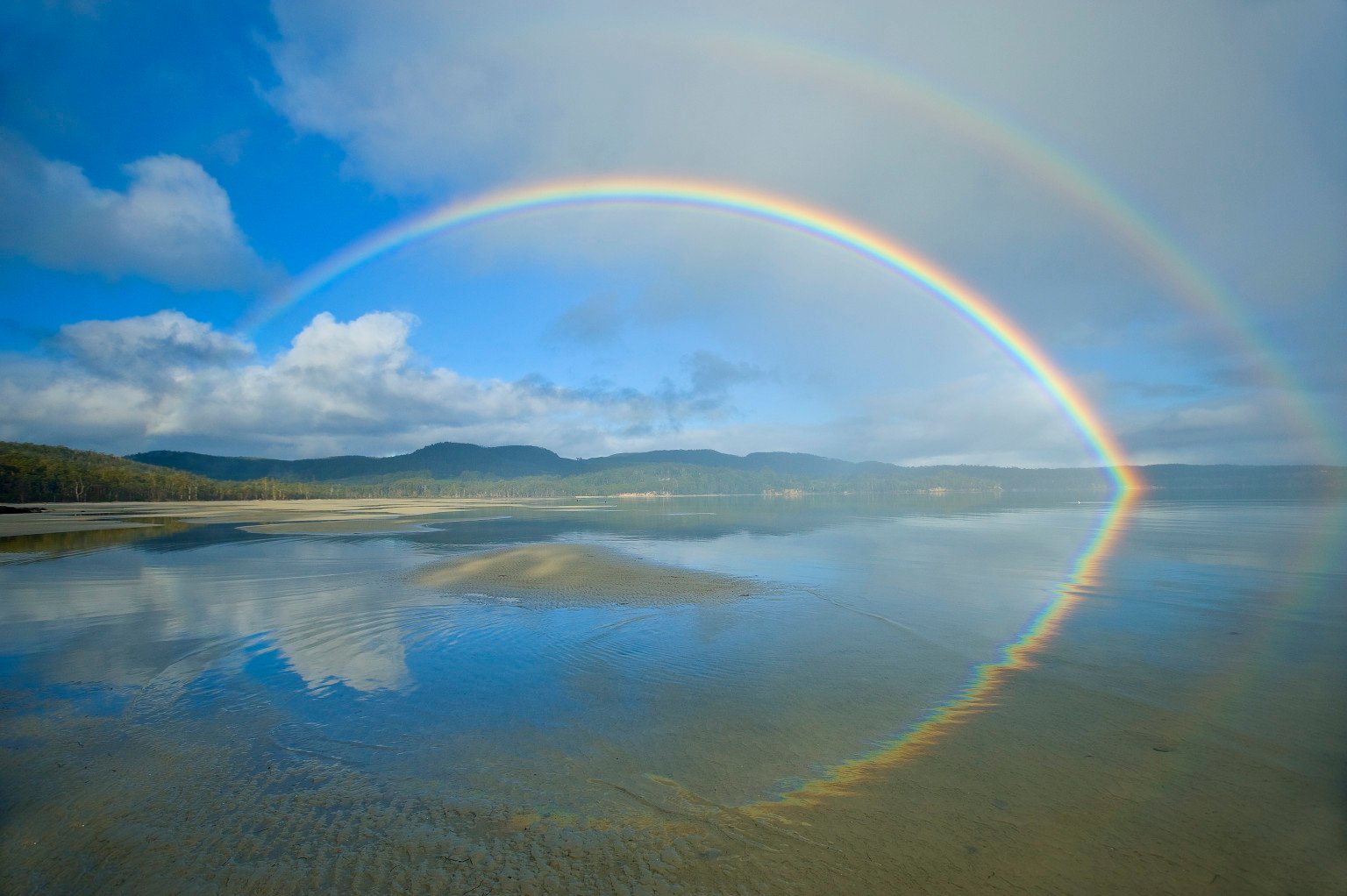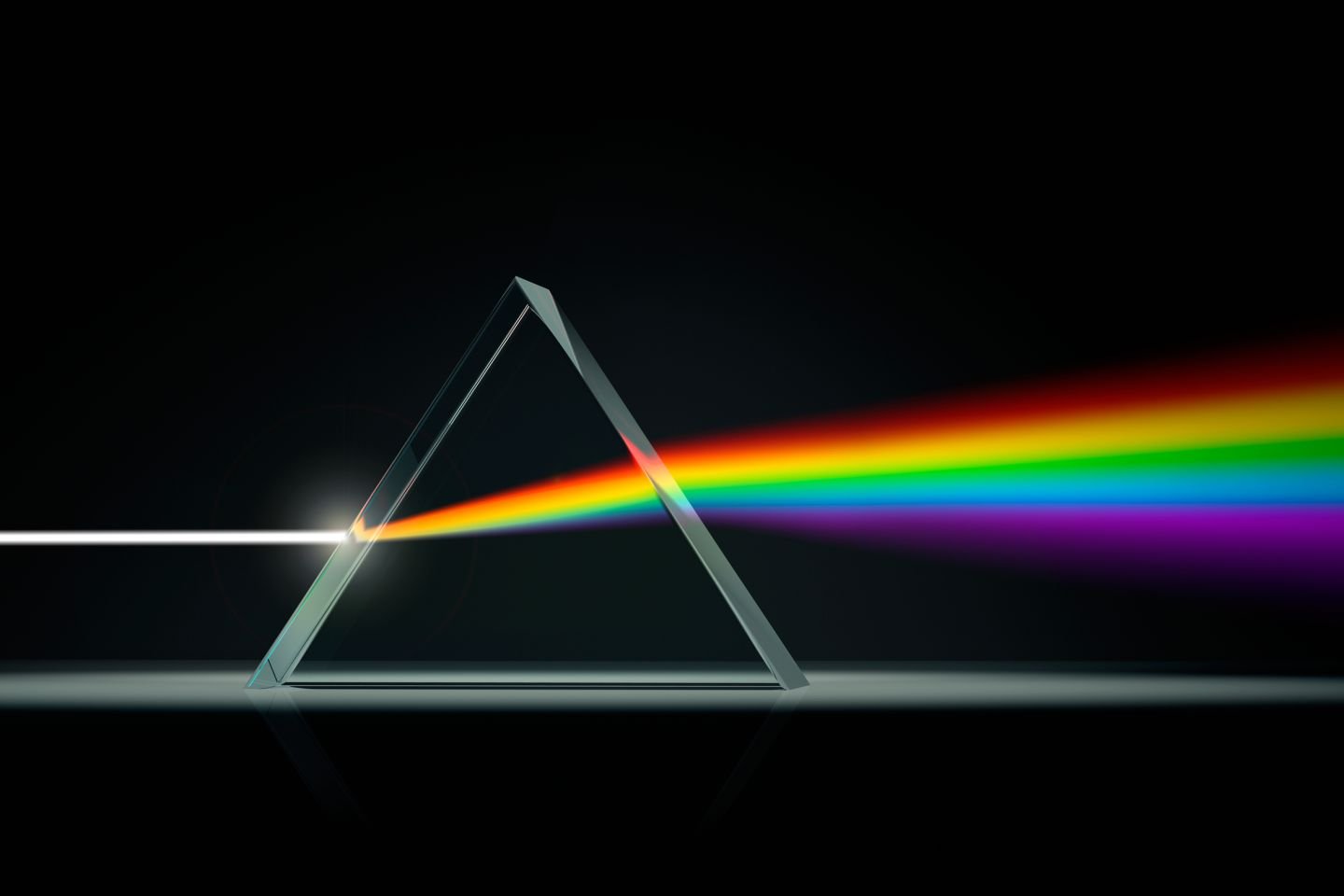Rainbows are one of nature’s finest works of art. In medieval times, they were always linked to happiness and good luck, and even implemented in religion as a gift from God! However, in this day and age we want to know the inner workings of them, which is what I am going to help you understand today.

How do Rainbows work?
To understand how Rainbows are formed we must first understand both the terms refraction and dispersion.
What is Refraction?
Refraction is when light travels through a medium at a certain speed. When it enters a different medium of a different refractive index, the speed travelled in this new medium is different meaning the light ray looks like it is changing direction.
Don’t be thrown off by the term ‘refractive index’. It is just a number given to any object which describes how fast light would travel through it. Generally, the higher the refractive index, the slower light travels through that medium.
You can test this out at home! Just put a pencil in a glass of water and the pencil will look like it is cut in half at the point of contact with water. This is because the medium, air, has a lower refractive index than the medium, water, so light travels slower in this water giving the illusion that the pencil is snapped in half.

Figure 1: Pencil in cup of water experiment
Typically, light travels from the Sun to Earth in 8 minutes. If you were to put a massive body of water between them, it would take the light 11 minutes as water has a higher refractive index, so travels slower!
What is Dispersion?
White light is the mixture of all wavelengths of visible colour. Every colour has a certain property called a wavelength, so when combined into a mixture, you have white light. Dispersion of light is when this mixture of wavelengths is split up by refraction. The famous prism is capable of doing this, as shown below.

Figure 2: Image showing the dispersion of white light with a prism
Combing Dispersion and Refraction
Sunlight appears white to us. When this white light approaches a medium of higher refractive index, such as water; this white light slows down – but – since white light is a combination of all wavelengths of visible light, different wavelengths slow down more than others which splits up this white light into its constituent colours. This splitting of light looks very much like a rainbow… but how does it form in the sky?
The formation of a Rainbow
By taking what we have learnt about refraction and dispersion, and applying it to our new situation; let’s send a white beam of light through a droplet of water in the rain. Some of this light will refract into the water droplet, then reflect off the inside wall of the droplet, then refract back out into the air. Typically, the angle between the light approaching the water droplet and the light coming out of the droplet should be about 42 degrees for rainbows to be seen.

Figure 3: Image showing light entering the droplet of water and exiting at an angle of 42 degrees
This is the tough part. The situation we have discussed is for one droplet of water. When this droplet refracts, violet is at the top of the spectrum then goes through to blue, green, yellow, orange then red (as shown in figure 3). This means that the first colour from the top of a rainbow should be violet, right? Instead, rainbows seem upside down, so that red is at the top and violet is at the bottom. Why is this?
Imagine droplets of water high up in the sky. When the light refracts out of these droplets, the red light at the bottom of the spectrum reaches our eyes and the other lights travel above our heads. As light enters water droplets further down closer to the ground, red light begins to travel under our heads and different colours are now entering our eyes. Therefore, the spectrum of a rainbow seems to be upside down. The image below attempts to explain this.

Figure 4: Image showing how the rainbow appears to be upside down
So why isn’t there a rainbow every time it rains then?
Here is the fun part. There is always a rainbow when it rains, but it depends where you are. Since the light is refracted at an angle of roughly 42 degrees for a rainbow to form (as mentioned before), it depends where you are on the ground so that the refracted light reaches your eyes.
This means everyone sees rainbows differently. So effectively, nature has painted an incredibly beautiful landscape… just for YOU.
If you have any questions, ask them below and until next time, take care. MystifactArticles you may find relevant:
Why does the road look wet on a hot day?
Why do things have colour?
What is light made of?
Why is the sky blue?
